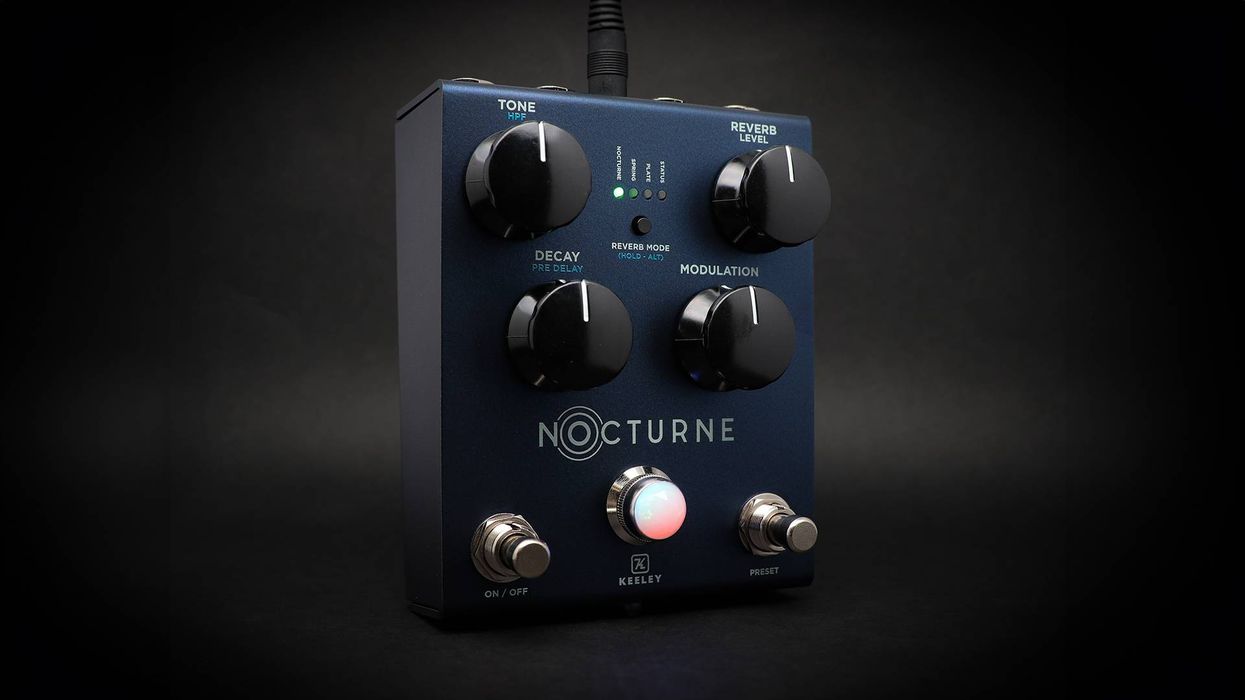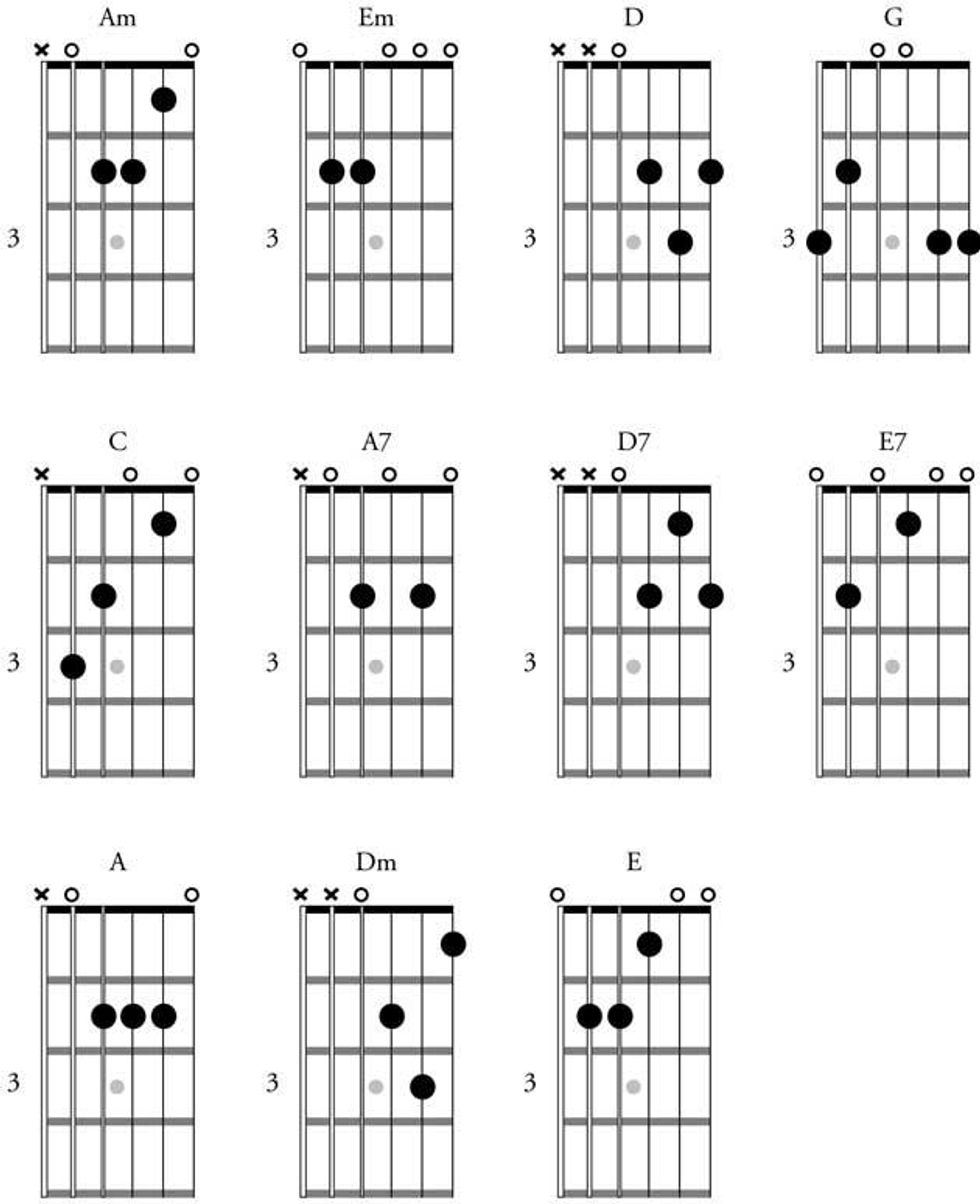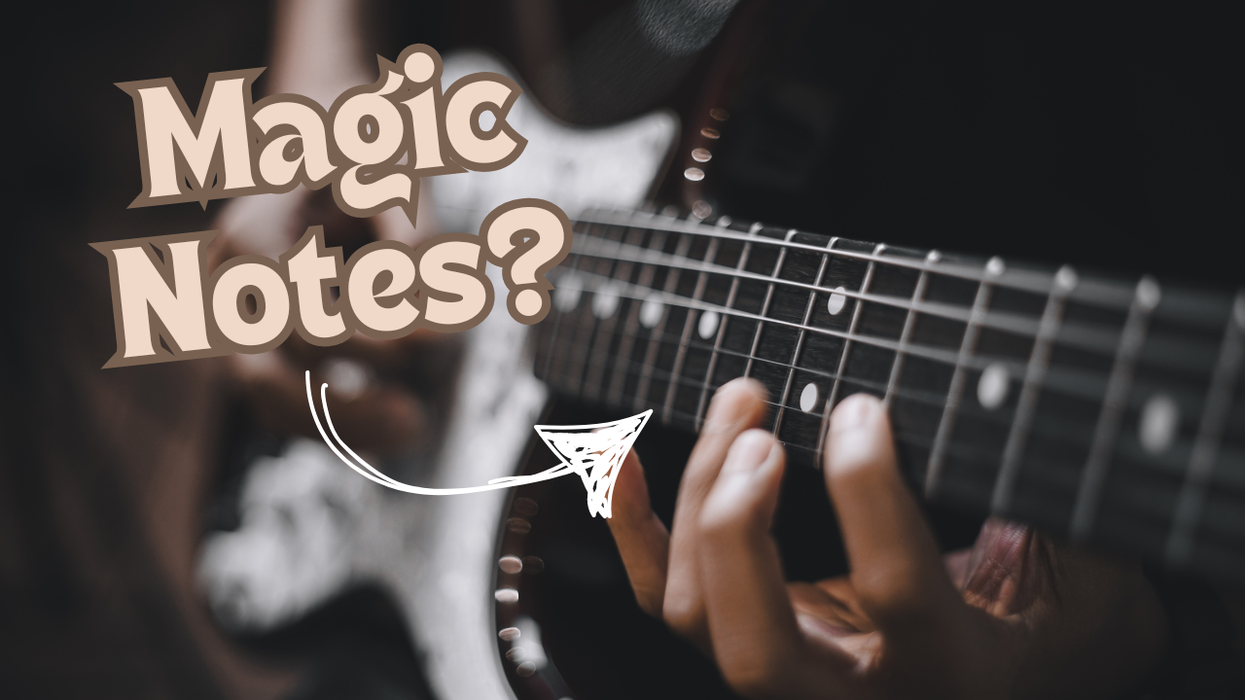| Print it! Click here to download a printable PDF of this lesson's examples. |
Fig. 1 consists of two scale diagrams of the minor pentatonic scale that show the passing tones I’ll be using in the next few examples. If you look closely at the two diagrams you’ll notice that the passing tones fall in between notes that are a whole step apart.
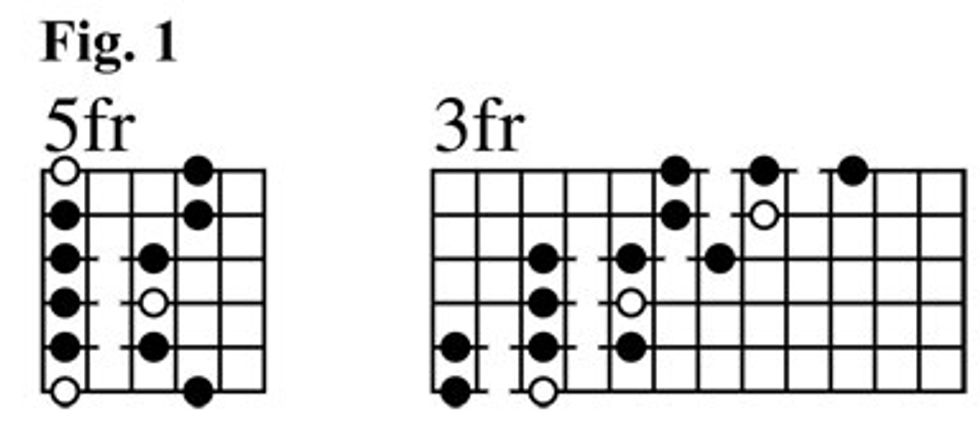
Fig. 2 is a lick out of the fifth position A minor pentatonic scale. I start the lick on the root (A), and then move to the flatted 3rd (C), natural 3rd (C#) and finally to the 4th (D). Remember, these notes are the ones you really want to hang on for too long. One exception would be when you resolve to the natural third, especially on the I chord of a blues. The lick then moves from the fourth to the root and then to E, the fifth of the scale, before finally resolving to the flatted 7th (G). Download example audio...
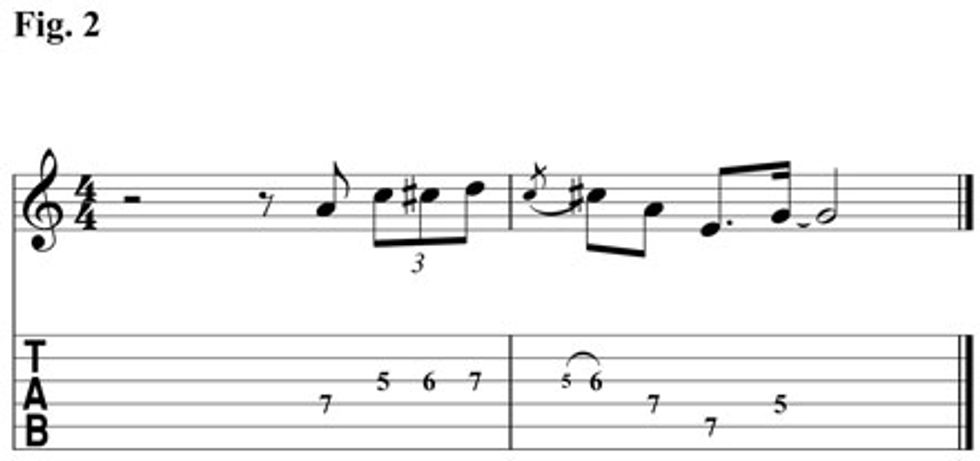
Fig. 3 starts out not only on the and of the fourth beat but it also starts on the 4th degree of the scale. It then goes up to the flatted 5th (Eb). The Eb is repeated before going back to the fourth. We then descend chromatically down to the minor third before resolving to the root. Download example audio...
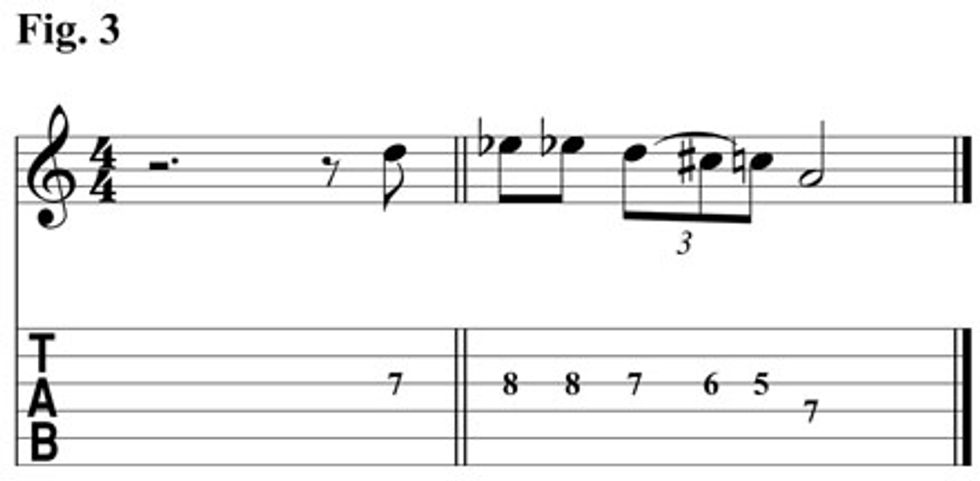
Fig. 4 is a down and dirty lick using the fifth and sixth strings. This lick starts out on the root and then moves to the flatted 3rd and uses passing tones to move down to the natural 3rd (C#). We use another passing tone to connect the major 3rd and the fourth in the second measure. Download example audio...
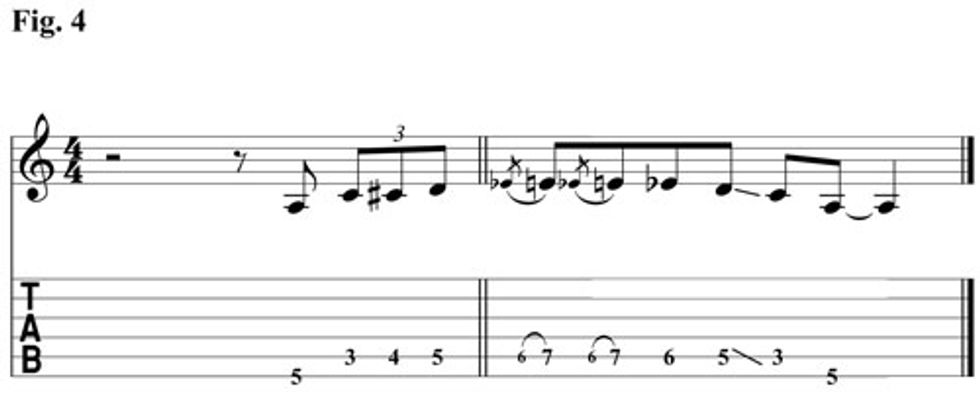
We look at an area of the neck in Fig. 5 that I spend a lot of time in as a blues player. This lick starts out on the flatted 7th (G) and then chromatically goes upward to G# and then A. We then move up to the first string and play C before using C# as a passing tone on our way to the 4th. With a skip, we go up to the 5th (E) on the twelfth fret of the first string and then jump back down to the flatted 3rd. Download example audio...

Fig. 6 is in the style of Stevie Ray Vaughan. This lick descends down the fifth position A minor pentatonic scale using all of our passing tones, the natural 3rd(C#), the natural 7th (G#), and the flatted 5th (Eb). This lick also uses a lot of hammer-ons and pull offs. Take care to make sure they come out clear and clean. Download example audio...

Have some fun experimenting with these passing tones. This will add a lot of color to your playing. Take your time with them and listen to how they interact against the chords. In some cases it may sound really cool to hang on them for a second to create a great deal of tension. Other times you’ll need to move quickly as to avoid too much tension. The best way I can describe this is to stretch and pull at both time and tonality to create and relieve tension.





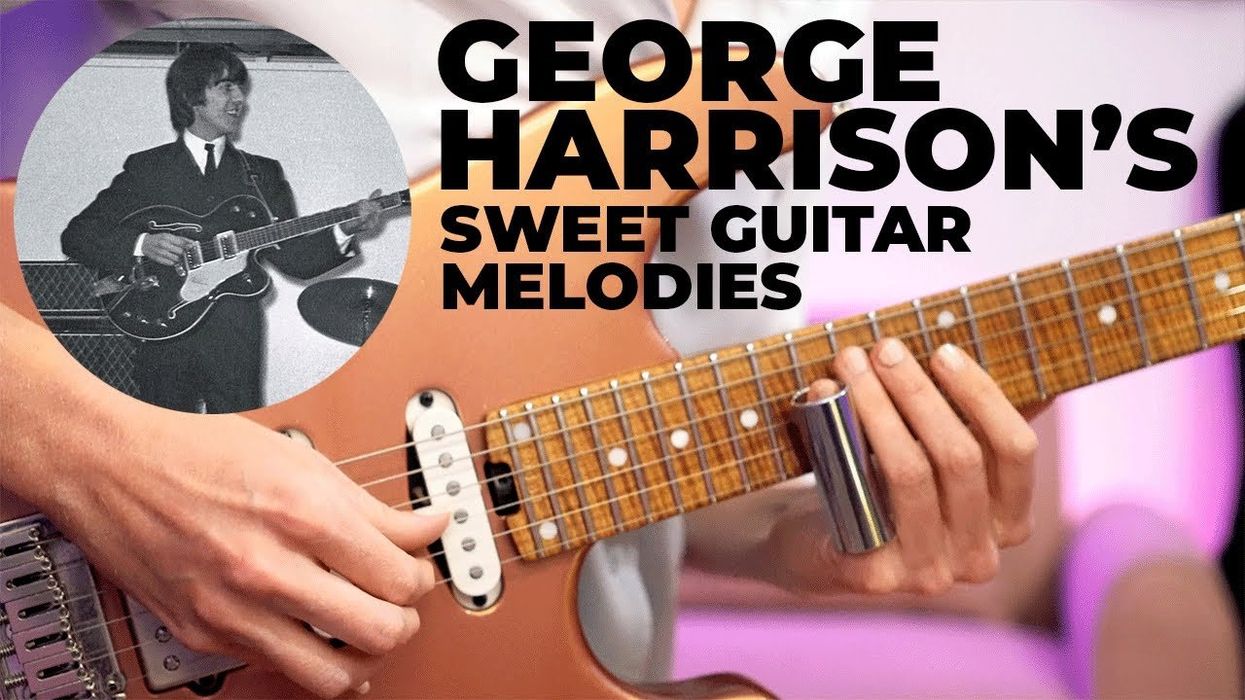



![Rig Rundown: Russian Circles’ Mike Sullivan [2025]](https://www.premierguitar.com/media-library/youtube.jpg?id=62303631&width=1245&height=700&quality=70&coordinates=0%2C0%2C0%2C0)


